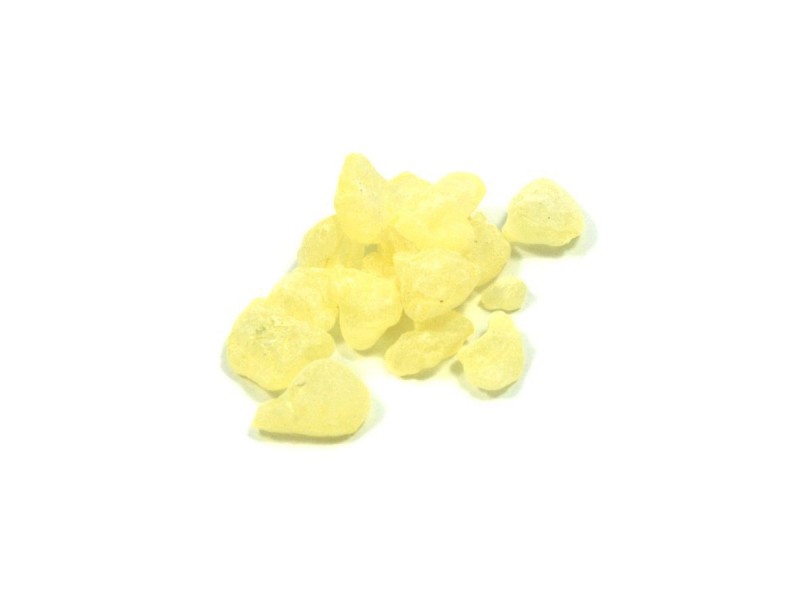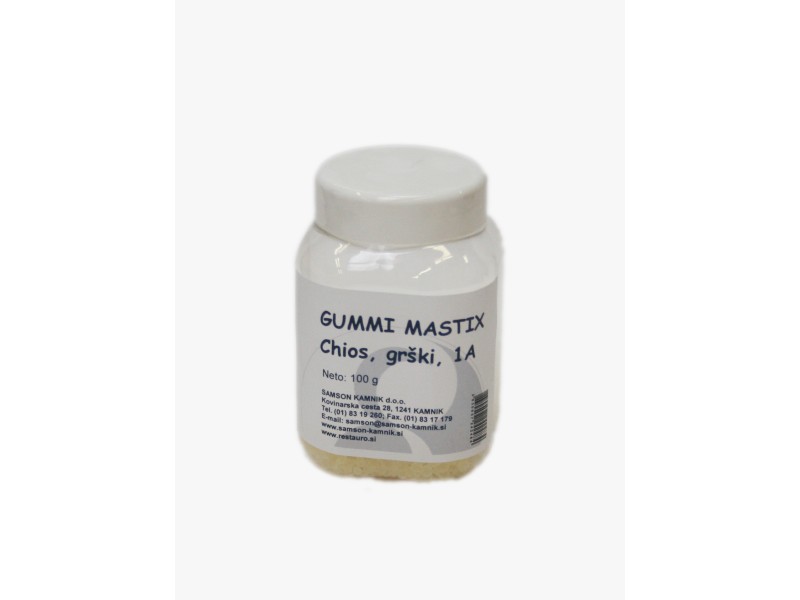Naziv vsebine
MASTIC from Chios 100 g
Mastic is a resin used chiefly in varnishes for oil paintings. It comes from the tree, Pistacia Lentiscus, which grows in the Greek archipelago. It is also found in Portugal, Morocco, and the Canary Islands, but, since the days of Dioscorides, commercial production has been almost exclusively confined to the island of Chios, Greece. The trees are small and the resin, contained in the bark rather than in the wood, is collected from numerous vertical incisions. Mastic appears commercially in small, pea-like transparent "tears", of a pale straw colour. It is very fragile, and has an aromatic odor. Its melting point is very low (95° C), its specific gravity is 1.074, and, besides resinous constituents, it has a small quantity of essential oil and moisture. It is almost entirely soluble in alcohol, ether, chloroform, and ethereal oils, but the greater part is insoluble in petroleum spirit.
Mastic, as well as dammar, may be used as a varnish ingredient, for certain purposes as a paint medium, and as an addition to oil colours. The varnish produced with mastic is light-coloured, glossy and elastic. It yellows with age, becomes fragile and fissured, and blooms readily in a moist atmosphere. From old recipes it seems probable that the varnish most widely used from the IX till the late XV century was made by dissolving mastic, or both mastic and sandarac, in linseed oil, often with the addition of a considerably quantity of pica greca, or colophony. Today mastic is primarily used in spirit varnishes. A mastic-turpentine solution is most common because it does not disolve dry paint. To increase its elasticity, elemi resin, linseed oil, or Venice turpentine is sometimes added. Doerner recommends the following proportions: for a picture varnish and painting medium, 1 part of mastic is dissolved in 3 parts rectified or doubly rectified oil of turpentine. For a tempera emulsion, the proportions are 1:2. The commercial mastic varnishes are usually prepared by dissolving the resin in hot oil of turpentine. They are sticky and very yellow, characteristics which, according to Doerner, come from the method of preparation as well as from the probable use of inferior resin. He maintains that cold-prepared varnishes are almost colourless and remain so. Mastic and sandarac are easily confused. Mastic, however softens when chewed, whereas sandarac powders. The colours, also are different, sandarac becomming darker and redder with age.
Solve 100 g mastic in 1 liter ethyl alcohol - mastic should be solved within 1 - 2 days.







